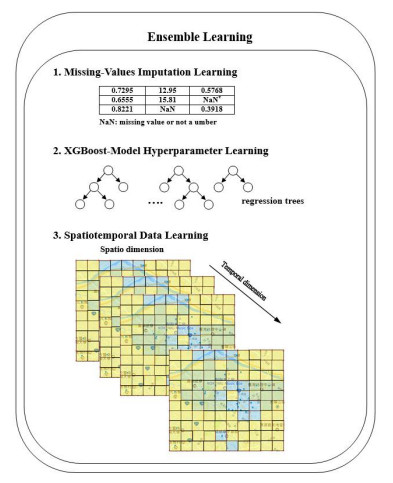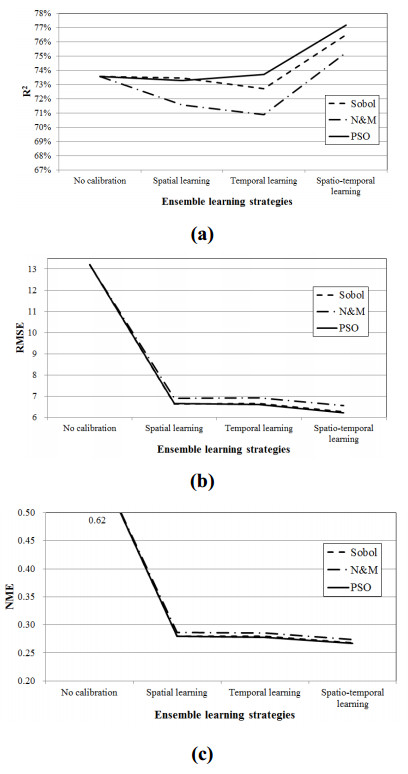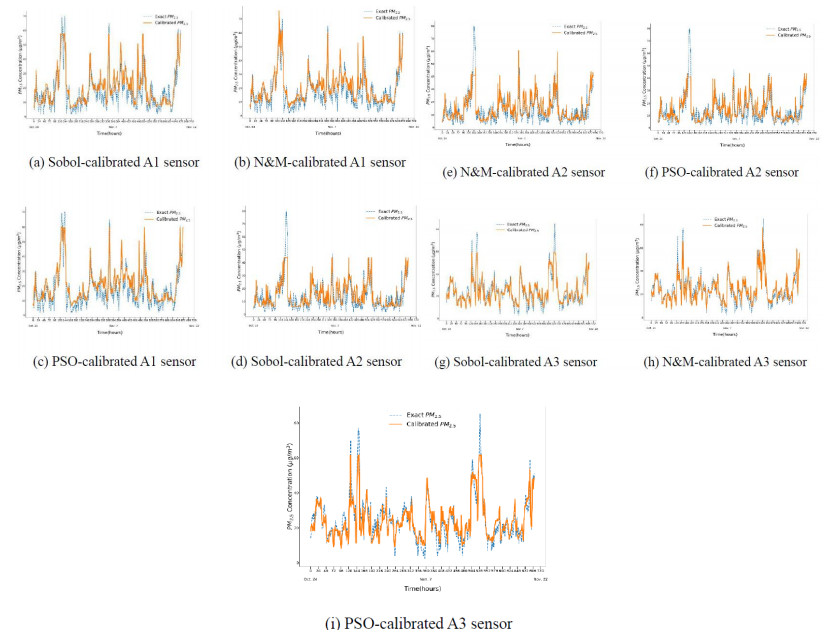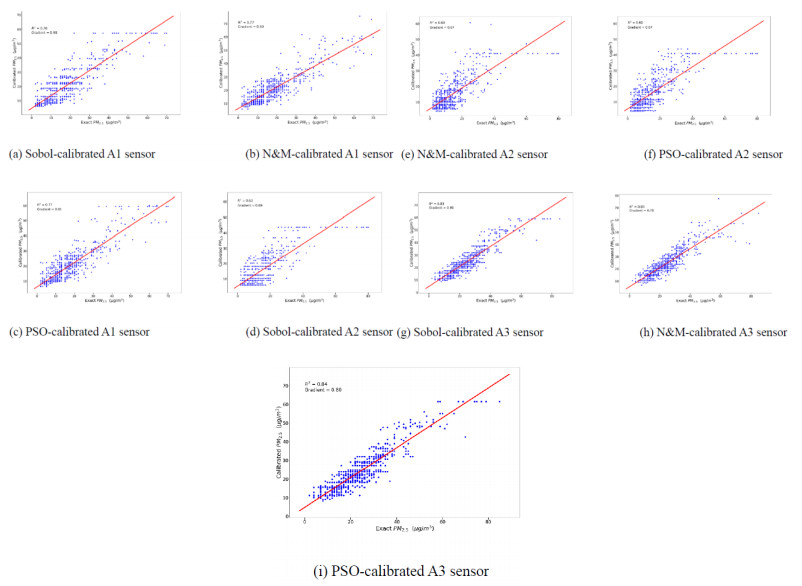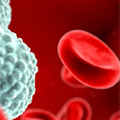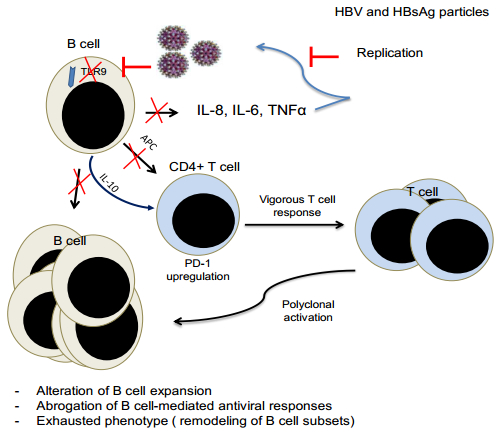Chronic HBV infection affects more than 240 million people worldwide and is a major risk factor for developing cancer in which 10–30% of cases will progress towards liver cirrhosis and hepatocellular carcinoma. Infection outcome relies on the immune system maturity. Toll-like receptor 9 (TLR9) is a sensor of viral and bacterial DNA motifs and activates plasmacytoid dendritic cells (pDCs) and B cells to generate effective immune responses against infection. B cells, especially CD38hi plasma cells play a major role in mediating humoral immune responses to clear HBV infection. Many studies have shown that TLR9 function is abrogated by HBV in pDCs. We aim to discuss the importance of B cell function in CHB patients and summarize concisely studies that describe the effect of HBV on TLR9 mediated B cell function. The effect of HBV on TLR9 activity in B cells should give insights into oncoviral immune escape strategies providing knowledge that will be essential to develop novel immunotherapeutic approaches.
1.
Introduction
The immense amount of industry productions and anthropogenic activities exasperate the concentrations of particulate matter with aerodynamic diameter ≤ 2.5 μm (PM2.5) in natural environment. Many researches have generated evidence for the strong correlation between ambient PM2.5 concentrations and human health [1], climate change [2], atmospheric visibility [3], plant species mortality [4], to name a few. The transportation and dispersion path of PM2.5 is hard to analyze and predict due to many uncertain anthropogenic activities (such as vehicle exhaust, coal and gasoline combustion, petrochemical production, and steel refinery), and mother-nature scenarios (such as soils, crustal elements, volcanic eruptions, wind and precipitation, typhoons, and landscapes). These uncertain factors span in both spatial and temporal dimensions. To estimate the actual PM2.5 concentrations, expensive and sparsely-distributed supersite sensors have been built by the government to monitor possible contaminations at a few regions of interest.
As the PM2.5 supersites are costly, they are sparsely installed in the monitoring area, lacking the ability to provide a satisfactory coverage of the investigated field. Thus, establishing internet of things (IoT) with low-cost and low-power sensors is emerging as a complement to the supersites and has been implemented in several countries. Hu et al. [5] constructed a sensor network named HazeEst which used machine learning techniques to estimate air pollution surface in Sydney by combining data from government-built fixed supersites and personally-affordable mobile sensors. Miksys [6] deployed inexpensive PM2.5 and PM10 sensors to conduct spatiotemporal predictions of fine-grained resolutions in Edinburgh. Chen et al. [7] deployed a participatory urban sensing network for PM2.5 monitoring with more than 2500 sensors in Taiwan and 29 other countries.
Although low-cost sensors can provide denser monitoring networks than those offered by supersites, the obtained PM2.5 measurements are less accurate. A feasible solution is to calibrate low-cost sensors by finding the relationship function between the measurements of low-cost sensors and supersite sensors. The relationship function can be found by mathematical regression, support vector regression, gradient regression tree boosting, adaptive neuro-fuzzy inference system (ANFIS), to name a few [8]. Many researches have also shown the geographical landscapes and meteorological patterns that have various degrees of influence on PM2.5 concentrations [9,10,11], and this influence deteriorates along the spatial and temporal distances. We contemplate the exploitation of spatiotemporal data and the model for data imputation and calibration can improve the measurement accuracy of low-cost sensors.
The contributions of this paper include the following. (1) The deployment of low-cost PM2.5 sensors that provides a denser coverage of air-quality monitoring area than that with government-built supersites. Our ensemble for imputation and calibration learning enhances the accuracy of measured air quality index (AQI) by low-cost PM2.5 sensors. (2) The dynamics of PM2.5 concentrations depend on spatial and temporal factors. We include the spatiotemporal learning by finding the best composition of training data in both spatial and temporal dimensions. (3) We develop an ensemble method from a holistic point of view where the best selection strategy for imputation method, the hyperparameter values of calibration model, and the composition of spatiotemporal training data, are learned by an effective optimizer. The experimental results manifest that our ensemble learning calibrates the low-cost sensors by enhancing R2, RMSE, and NME, with a significant improvement of 4.92%, 52.96%, and 56.85%, respectively.
The remainder of this paper is organized as follows. Section 2 describes the state-of-the-art approaches for data imputation and sensor calibration. Section 3 presents the proposed ensemble learning for best imputation method, calibration of hyperparameter values, and spatiotemporal data composition. Section 4 provides the experimental results with discussions. Finally, Section 5 concludes this paper.
2.
Related work
2.1. Data imputation
Missing value is a commonly encountered problem in IoT applications. The reasons for incurring missing values could result from direct failures of sensors, linkage failures or data losses in network communication, malfunction of storage servers, or blackout of electricity. Some missing-value scenarios can be eradicated by generating multiple duplicates of data and storing them in distributed storage servers [12]. But this approach entails a large volume of storage and is not able to deal with sensor failures and electricity blackout. An alternative to the data-redundancy approach is data imputation by use of statistics or machine learning. Data imputation approaches estimate the missing values by analyzing the covariance of existing variable values or learning the multivariate relations. The data imputation approaches are useful when the data loss is random and dependency exists among variables.
The mean imputation method [13] is the simplest imputation method which replaces the missing values by the mean of existing data for the corresponding variable. The mean imputation method does not change the variable mean, however, some statistics such as variance and standard deviation are underestimated. The interpolation imputation method [14] assumes the original value of the missing data has mathematical relations with its neighboring data of the same variable and thus can be restored by various forms of interpolation, such as linear, triangular, weighted, or higher-order forms. The KNN imputation method [15] discards the variable of the missing value and uses the remaining variable values to search the k nearest records in appropriate distance space. The missing value is then filled up by the distance-weighted mean of the values existing in its neighbors. The MICE imputation method [16] is a regression method where the imputed value is predicted from a regression equation. The SOFT imputation method [17] treats the imputation as a matrix completion problem and uses the convex relaxation technique to provide a sequence of regularized low-rank solutions and iteratively replace the missing values with those obtained from a soft-thresholded singular value decomposition.
2.2. Sensor calibration
The low-cost sensors are deployed with a dense coverage than the government-built expensive sensors. However, the readings obtained from low-cost sensors are not highly accurate and should be carefully adjusted before being released for applications. Sensor calibration is such a process by either hardware adjustment or software manipulation. As our sensors are low-cost and hardware calibration is not feasible, we focus on software calibration in this paper. The government-built high-accuracy sensors provide good references for software calibration of low-cost sensors. When a low-cost sensor and a high-accuracy sensor is near enough, they should read the same measured value. Therefore, the software calibration can be fulfilled by mathematical equations such as regression. In fact, the US EPA and Taiwan EPA apply regression technique to calibrate sensors by reference to manual measurements. Every year, Taiwan EPA releases the linear regression equations adopted by automatic sensors (https://taqm.epa.gov.tw/pm25/tw/Download/). As machine learning approaches, such as support vector regression [18] and gradient boosted regression tree [19], usually manifest better performance over mathematical regressions, this paper adopts XGBoost [20], which is one of the best machine learning regression methods, as our calibration model.
XGBoost is a novel gradient tree boosting algorithm which has won several competitions including Kaggle's challenges (https://www.kaggle.com/competitions) and KDDCup 2015 [21]. By using a sparsity-aware split-finding algorithm and weighted quantile sketch, XGBoost machine scales up to billions of data examples but only consume fewer computational resources than other machine learning regression methods. XGBoost machine has a number of hyperparameters which influence the learned ensemble of regression trees between the observations and variable values. The hyperparameters and their corresponding value ranges are described in Table 1.
The hyperparameter optimization of a machine learning algorithm is a process which searches the most appropriate setting values of the hyperparameters to obtain the optimal performance of the machine learning algorithm on the addressed problem. The hyperparameter optimization can be achieved by random search [22], Taguchi orthogonal method [23], and meta-learning. The meta-learning method learns the optimal configuration of machine learning hyperparameters by another machine learning approach. This fashion of learning-for-learning has attracted many researchers [18,24].
In addition to the hyperparameter optimization of the adopted machine learning approach, the selection of the most appropriate training instances is very critical [25]. The instance selection technique not only reduces the data volume but also increases the accuracy of the discovered knowledge from a big dataset. For learning the PM2.5 concentration dataset, the selection of span coverage of spatial and temporal training instances is related to the local landscape, climate, and land usage. Hence, the conception of learning on selection of spatiotemporal PM2.5 training instances is particularly useful and it has not been explored in the related literature.
3.
Method
3.1. Ensemble learning
We propose an ensemble method to learn the best configuration of three cooperating tasks: the selection of data imputation methods, the hyperparameter optimization of XGBoost model for data calibration, and the selection of spatiotemporal training instances. Our system concept is illustrated in Figure 1. The available imputation methods we considered are the mean method, interpolation method, KNN, MICE, and SOFT. The hyperparameters of XGBoost need to be tuned are the eight parameters as described in Table 1. There are two choices of spatial training data for each low-cost sensor: using the sequence of readings of its own and its referred supersite, or using the sequence of readings of all supersites and low-cost sensors. The available temporal training data is 30-day historical hourly PM2.5 measurements. We, thus, consider temporal data in t days for calibration where t is selected between 1 and 30.
To construct an ensemble learning of imputation, XGBoost hyperparameters, spatial data collection, and temporal data ranges, the task is formulated as a decision problem involving 11 continuous or integer variables. The decision ensemble solution is represented as a vector, as shown in Figure 2, encoding a selection instance of imputation method (I), XGBoost hyperparameters (g1, g2, …, g8), spatial data collection (C), and temporal data range (t). To learn the best ensemble, an optimization method needs to be applied. In the experiments, we will compare the performance of three optimizers which are briefly described as follows.
3.2. Compared optimizers for ensemble learning
3.2.1. Particle swarm optimization
The particle swarm optimization (PSO) [26] is an evolutionary algorithm which is capable of learning the optimal value of model hyperparameters. PSO is a bio-inspired algorithm which mimics the social dynamics of bird flocking. This form of social intelligence not only increases the success rate for food foraging but also expedites the process. Considering a swarm of N particles {x1,x2,⋯xN} in an s-dimensional Euclidean space, the particle moving trajectory is guided by the personal best (pbest) and the global best (gbest). Particle i has a personal memory storing the best position among those it has visited, referred to as pbest, and the best position gbest visited by the entire swarm. The PSO iterates a swarm evolution until a stopping criterion is satisfied, which is usually set as a maximum number of iterations. At each iteration, particle i adjusts its position xi as follows.
where K is the constriction factor, c1 and c2 are the accelerating coefficients, and r1 and r2 are random numbers drawn from (0, 1). We designate the performance of the ensemble learning solution as the particle fitness.
3.2.2. Sobol quasirandom sequence
Sobol quasirandom sequence is a distribution of points whose function values sum up toward to the function integral, and converge as fast as possible [27]. Hence, the Sobol quasirandom sequence can be used to generate a small set of samples to reasonably well explore a large space. Considering a Sobol quasirandom sequence of N points {x1,x2,⋯xN} in an s-dimensional Integer space, the next drawn point should minimize the inter-point discrepancy. For a point x=(x1,x2,⋯,xs)∈Zs, a hypercube Gx is defined as Gx=[0,x1)×[0,x2)×⋯×[0,xs). The next point x is generated to minimize the discrepancy as follows.
Due to its quasirandom and fast convergence properties, Sobol quasirandom sequence can be applied to search the near-optimal values of the ensemble learning instance.
3.2.3. Nelder and meads
Nelder and Meads (N & M) [28] is a direct search heuristic which uses a simplex of S+1 vertices {x1,x2,⋯xS+1},xi∈Rs, in an s-dimensional Euclidean space to conduct iterative moves towards the global optimum. Starting with an initial simplex, the N & M repeatedly replaces the worst vertex (in terms of the objective value) by an improving trial point obtained by performing reflection, expansion, or contraction operations. If no such improving trial point can be produced, the simplex shrinks its size by dragging the remaining vertices toward the best vertex and repeats the iterative moving process. Without loss of generality, let f be the objective function to be minimized and f(x1)≤⋯≤f(xS)≤f(xS+1). We calculate the centroid xo of {x1,x2,⋯xS} and reflect xS+1 against xo to obtain the reflection point xr as follows.
If f(x1)≤f(xr)≤f(xn), then replace xS+1 with xr and restart with the new simplex. If f(xr)<f(x1), then produce the expansion point xe as follows.
If f(xe)<f(xr), then replace xS+1 with xe, otherwise replace xS+1 with xr. However, if f(xs)<f(xr), then a contraction point xc should be generated as follows.
If f(xc)<f(xs+1), then replace xS+1 with xc, otherwise shrink the simplex by retaining x1 and replace the remaining vertices by
and resume the process with the new simplex until the simplex size is less than a threshold.
4.
Results and discussions
We selected three government-built PM2.5 supersites located in central Taiwan area and deployed a low-cost sensor for calibration test with each of the supersites. All the low-cost sensors are the same product model G7 PMS7003 which is a particle concentration sensor based on laser light scattering. The working principle is to use a laser to illuminate the suspended particles in the air to generate light scattering. The scattered light is then collected at a certain angle to estimate the particle size and the number of particles of different sizes per unit volume. The minimum measurable particle diameter is 0.3 μm and the sampling response time is less than one second. Taiwan EPA supersites adopt beta ray attenuation method. By gauging the beta ray decrement due to passage through a filter paper with particle concentrations, the number of particles and their sizes can be estimated. The model G7 PMS7003 low-cost sensor has been shown to have a high correlation with government-built supersite sensors in several publications [29,30]. We deployed the low-cost sensor at the places as close to as possible to the corresponding supersite. However, due to the prohibitive zone of government property, the actual distance between the corresponding low-cost sensor and supersite is between 85 and 122 meters as shown in Table 2. Fortunately, all the three supersites are located in large open spaces and the low-cost sensors are deployed at nearby school campus, the difference between the sensor readings is mainly due to hardware characteristics and the influence of local emissions is kept minimal.
The Taiwan EPA calibrates the automatic supersite by using a reference to the manual supersite on an annual basis. That is, the readings for the entire year from both supersites are collected for training, and the regression equation so obtained is used to calibrate the readings from the automatic supersite for the next year. As the low-cost sensors are less robust than the supersites, we chose to calibrate the low-cost sensors on a monthly basis. The monitored hourly PM2.5 data is from the period September 24 to November 22 in 2017, spanning 60 days. The data collected in the first 30 days are used for the selection of spatiotemporal training data and the data for the remaining days are used for testing. We conduct two series of experiments. The first one is for estimating the significance of missing-value imputation and the second one is for validating the contribution of ensemble learning in a low-cost sensor calibration. The platform for conducting the experiments is a notebook computer equipped with an Intel Core i5 CPU and 8.0 GB RAM. All programs are coded in Python with machine learning open packages.
To evaluate the performance of our ensemble learning on data imputation and calibration, we adopt the following measures: the coefficient of determination (R2), the root mean square error (RMSE), and the normalized mean error (NME). Given a set of n observed values {y1, y2, …, yn} and another set of n calibrated numbers {x1, x2, …, xn}, we evaluate the calibration performance as follows.
where ¯y is the mean observed value.
4.1. Missing-value imputation
The data loss is incurred by malfunction of sensors, servers, and network transmissions. The significance of its impact on calibration performance depends on the data loss ratio (DLR) in the training set and the robustness of the missing-value imputation methods. Our collected PM2.5 data are recorded in time unit of hours, so there should be 720 (24 × 30) records for each site in both training and test sets if no value is missing. We check our dataset and calculate the DLR and the maximum time window value is continuously missing in the records. Table 3 tabulates the DLR and the maximum time window (in hours) of the missing value in both training set and test set. We observe that the DLR ranges from 5.8% to 9.2% in the training set, and it is between 1.4% and 3.9% for the test set. The maximum time window of the missing value is 8 or 16 hours for the training set and it is 9 hours for the test set. It is noted that the imputation method is applied only on training data. The test data remains unaltered as being used as the exact values for conducting performance evaluations on the calibrated data. The PM2.5 concentration has high variability over time but manifests a daily periodic pattern. The observed PM2.5 concentration in a day usually reaches its lowest value around noon and starts climbing in the evening until it reaches its highest value in midnight. The maximum time window of the missing value is 8 or 16 hours in our training set, the daily pattern can be learned and used to replace the missing value. The imputation methods that we applied in the ensemble worked well on our training set as it can be seen in the experimental results. If the maximum time window of the missing value exceeds 24 hours, we suggest the reader to directly remove the null records in order to avoid any bias.
We apply our ensemble learning approach with or without missing-value imputation learning to obtain the calibration results. To realize the influence of training-data imputation on the test-data calibration, we compute the R2, RMSE, and NME between the PM2.5 readings of the paired supersites and low-cost sensors. The numeral performance is shown in Table 4. It is seen that the R2, RMSE, and NME between the original readings without performing any imputation and calibration learning is 73.57%, 13.20, and 0.6188, respectively. By performing the proposed ensemble learning on both imputation and calibration, all three optimizers, Sobol, N & M, and PSO, significantly enhance the three performance measures. The improvement ratio to the original measures is listed in parentheses. PSO is the best optimizer which improves the three performance measures by 4.92%, 52.96, and 56.85%, respectively. Sobol is the second best optimizer followed by N & M. Next, we apply the ensemble learning on calibration, however, no imputation is performed on the training set. The three optimizers are still able to perform calibration reasonably well. The improvement ratio decreases by about 1% as compared to performing ensemble learning on both imputation and calibration. The reason may be due to the fact that the DLR in the training set is not too high (see Table 3), so the execution of imputation does not significantly affect the regression trees learned by XGBoost. The ensemble calibration also works best with the PSO optimizer, followed by Sobol and N & M.
4.2. Calibration
Our ensemble approach learns the best strategy for combining the imputation method, XGBoost hyperparameter values, and spatiotemporal data composition for calibration of low-cost PM2.5 sensors. Our previous experimental result has shown the execution of data imputation does improve the performance of subsequent calibration, however, the influence is not significant. Now, we want to measure the contribution of ensemble learning on spatiotemporal data for calibration. We classify our ensemble learning into three types: ensemble learning on spatial data, ensemble learning on temporal data, and ensemble learning on spatiotemporal data. Each type of ensemble learning is separately applied with each of the three optimizer, namely, Sobol, N & M, and PSO. We detail the comparative performance of various ensemble learning for calibration methods in Table 5, the best calibration result for each low-cost sensor by every type of ensemble learning is shown in boldface under the corresponding performance metric. The baseline result is obtained without applying ensemble learning, i.e., the performance is measured between original test data of the supersites and low-cost sensors. The experimental results have the following implications. (1) It is seen that PSO is the best optimizer for ensemble learning with temporal and spatiotemporal data. PSO also performs well for ensemble learning with spatial data, though Sobol performs slightly better than PSO. N & M is outperformed by the other two optimizer for all types of ensemble learning. (2) All the three types of ensemble learning for calibration can achieve significant improvement on RMSE and NME, but only the ensemble learning on spatiotemporal data is able to enhance the R2 measure. This phenomenon indicates that the ensemble learning can actively choose the best composition of training set from either spatial or temporal perspectives, and the application of spatiotemporal learning can achieve the overall best calibration performance. (3) Figure 3 shows the mean performances over the three low-lost sensors by using various types of ensemble learning strategies. It is clearly seen that both Sobol and N & M enhance the mean RMSE and NME while slightly deteriorate R2 at the same time when applying either ensemble spatial learning or ensemble temporal learning. On contrary, PSO makes good explorations in spatial and temporal spaces considering the tradeoffs among the three, sometimes conflicting, performance objectives. Therefore, PSO well surpasses Sobol and N & M with every type of ensemble learning.
Figure 4 shows the hourly comparison between the exact PM2.5 (readings of the supersite) and the calibrated PM2.5 (calibrated readings of the low-cost sensor) for the three sites. For each site, we separately show the calibrated curve obtained by Sobol, N & M, and PSO, respectively. All the three optimizers apply ensemble hyperparameters and spatiotemporal data learning to automatically calibrate the readings from the low-cost site to align with the exact readings reported from the expensive government-built supersite. But N & M seems to over-calibrate the readings at some epochs and manifest many fluctuations in the calibration, this behaviour is particularly conspicuous as can be seen in Figure 4(e). On contrary, Sobol and PSO tend to be relatively conservative in calibrating peak and valley values as compared to N & M. One promising direction of our future research is to blend the calibration results from the three optimizers to adaptively capture the main trend and fluctuating details of the exact PM2.5 series.
Figure 5 shows the scatter plots and gradient between the exact PM2.5 and the calibrated PM2.5 obtained by Sobol, N & M, and PSO. The gradient ranges from 0.67 to 0.88. The highest gradient is obtained by applying Sobol to calibrate A1 sensor, and the lowest gradient is observed when A2 sensor is calibrated by N & M or PSO. The gradient so obtained is mainly influenced by the selected supersite rather than the applied optimization method. A2 sensor tends to produce a lower gradient than those obtained with A1 sensor and A3 sensor. The comparative results of gradient conform to those of other performance metrics observed in Table 5.
5.
Conclusions
Establishing a low-cost PM2.5 sensor IoT is complement to the AQI monitoring network of government-built supersites. Low-cost sensors provide a dense coverage of monitoring area but lack high-accuracy measurements. Calibration of low-cost sensor measurements by reference to high-accuracy supersites is cheap and automatic. In this paper, we have proposed a novel ensemble approach for learning the best strategy to select the imputation method, hyperparameter values of calibration model, and the composition of spatiotemporal data. Three optimizers, namely, Sobol, N & M, and PSO, were tested with various kinds of ensemble learning. The experimental results show that our ensemble method actively learns the optimal strategy for combining imputation, parameterization of calibration, and composition of spatiotemporal data. The best performance is obtained by using PSO, and the improvement ratio with respect to R2, RMSE, and NME, is 4.92%, 52.96%, and 56.85%, respectively.
Acknowledgments
This research is partially supported by Ministry of Science and Technology of ROC, under Grant MOST 107-2410-H-260 -015 -MY3, Grant MOST 107-2420-H-260-002-HS3, and Environmental Protection Administration of ROC, under Grant EPA-107-FA12-03-A150.
Conflict of interest
We declare no conflicts of interest in this paper.









 DownLoad:
DownLoad:
